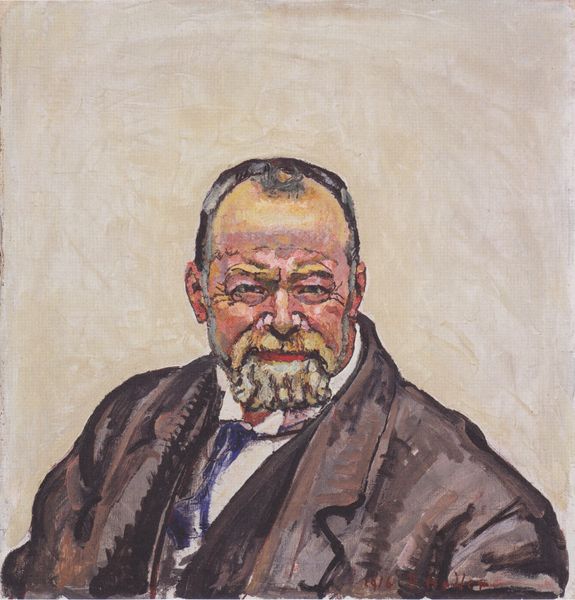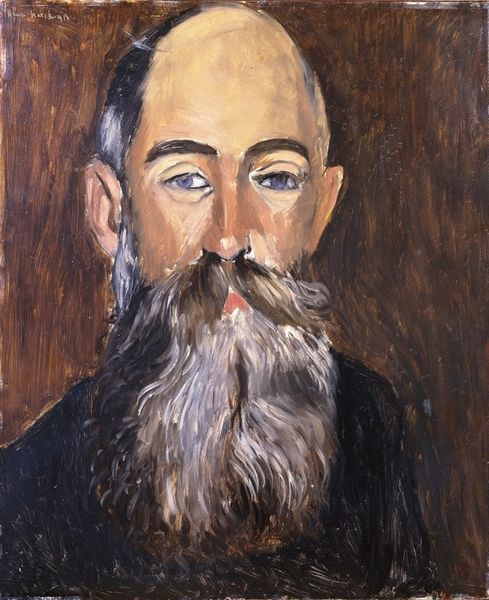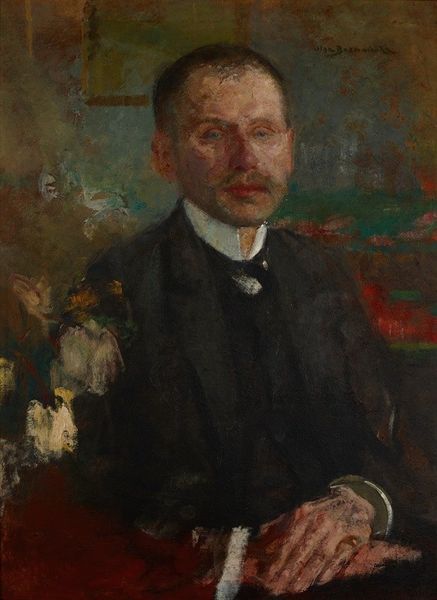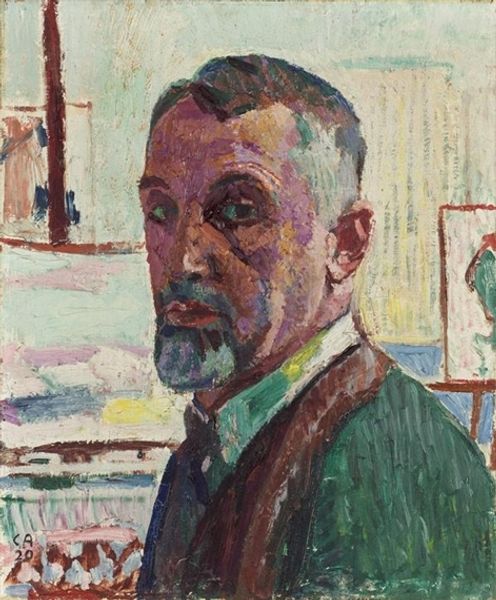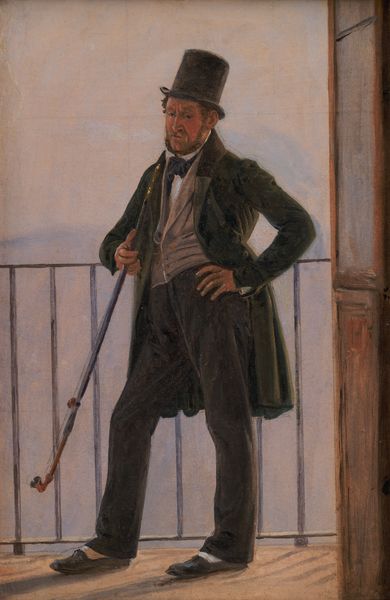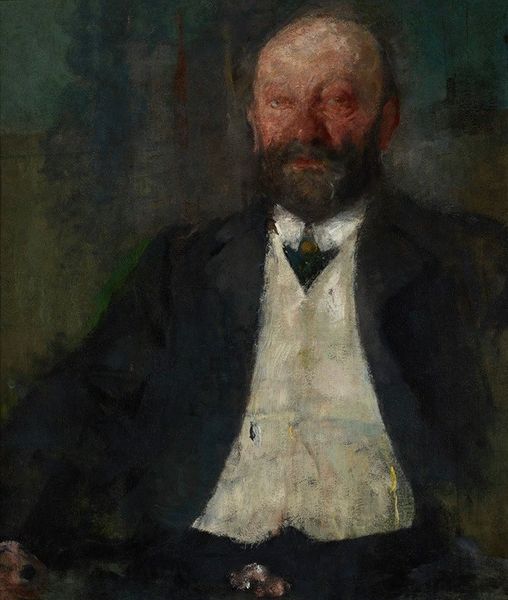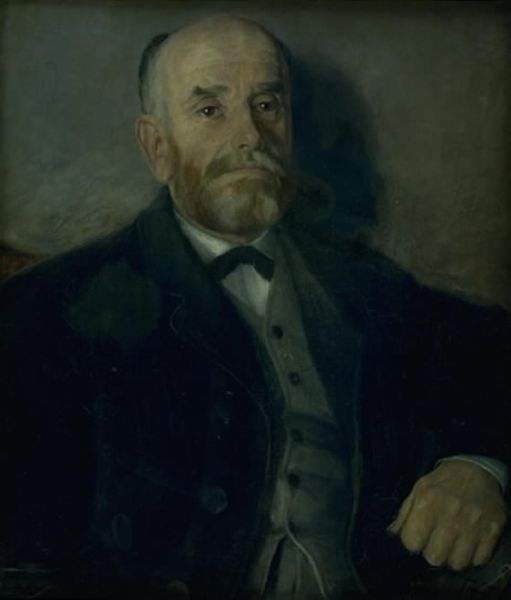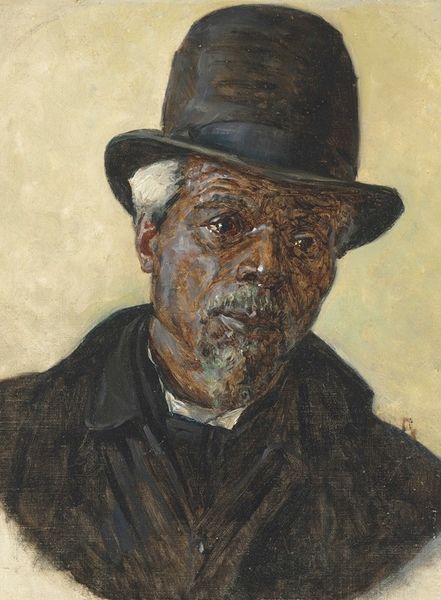
Dimensions: 43 x 39 cm
Copyright: Public domain
Curator: Let's delve into Ferdinand Hodler's "Self-portrait with roses," completed in 1914. What strikes you first about this piece? Editor: The texture, definitely the application of oil paint, feels deliberate, almost rough, contrasting with the delicate subject matter suggested by the roses. You see the artist’s hand so clearly. Curator: Absolutely. The rawness serves to counter the traditional idea of a softened, flattering self-portrait, doesn’t it? The composition speaks to Hodler’s exploration of self and the artistic role amidst significant historical shifts. Remember, 1914 marks the beginning of World War I, a period of massive social upheaval. Editor: Which gives weight to his material choices. Oil, the very medium, becomes heavy with context. Is it a conscious commentary on class through accessibility, rejecting fancier options like pastels at a moment of immense material precarity? The question of value in this moment becomes almost palpable in its raw presence on the canvas. Curator: A sharp observation. There’s a duality here; he situates himself amidst emblems of beauty and fragility–the roses–but his gaze is steady, almost confrontational, resisting sentimentality. Perhaps, a comment on art’s purpose in wartime? It also marks a departure as many other artists engaged with landscape during this period. Editor: The labor itself is visible, too. Hodler isn't just representing roses; he's actively building them up from layers of paint, adding value. That act of making—transforming raw materials— mirrors a search for some kind of control at a time where control seems completely absent from political, societal, or institutional forces. Curator: Yes, it's fascinating how this painting functions as both an intimate self-reflection and a historical document, encapsulating personal and public anxieties of the period. The roses aren’t simply decorative; they are loaded with historical weight. Editor: So, while we initially saw a contrast in technique and theme, ultimately, the intentional use of the medium mirrors Hodler’s struggle in the face of an escalating crisis, and how value shifts during wartime. Curator: Indeed. The painting encourages us to consider the complex interplay of the artist's identity, the materials at hand, and the turbulent era that shaped both.
Comments
No comments
Be the first to comment and join the conversation on the ultimate creative platform.

